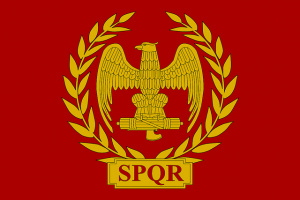Difference between revisions of "Language/Latin/Culture/Roman-Architecture-and-Art"
m (Quick edit) |
m (Quick edit) |
||
| Line 63: | Line 63: | ||
[[Category:Latin-0-to-A1-Course]] | [[Category:Latin-0-to-A1-Course]] | ||
<span gpt></span> <span model=gpt-3.5-turbo></span> <span temperature=1></span> | <span gpt></span> <span model=gpt-3.5-turbo></span> <span temperature=1></span> | ||
==Other Lessons== | |||
* [[Language/Latin/Culture/Roman-Gods-and-Goddesses|Roman Gods and Goddesses]] | |||
* [[Language/Latin/Culture/Roman-Poetry-and-Poets|Roman Poetry and Poets]] | |||
* [[Language/Latin/Culture/Famous-Roman-Figures|Famous Roman Figures]] | |||
* [[Language/Latin/Culture/The-language-of-ancient-Rome|The language of ancient Rome]] | |||
{{Latin-Page-Bottom}} | {{Latin-Page-Bottom}} | ||
<span links></span> | <span links></span> | ||
Revision as of 21:37, 2 April 2023
The ancient Romans were innovative architects and talented artists, and their works continue to influence many aspects of modern life to this day. In this lesson, you will explore Roman architecture and art, including famous buildings, sculptures, and mosaics, and learn about their influence on later periods.
After mastering this lesson, these related pages might interest you: Roman Gods and Goddesses & The language of ancient Rome.
Roman Architecture
Roman architecture is characterized by its monumental scale and highly ornamental detailing, which were used to express the power and greatness of the Roman Empire. Roman architects borrowed elements from Greek architecture to create their own unique style, which included influences from the Etruscan civilization and other cultures encountered during the expansion of the Empire.
Famous Buildings
One of the most famous examples of Roman architecture is the Colosseum, located in Rome. Built in the first century AD, this massive amphitheater could hold up to 50,000 spectators and was used for a variety of events including gladiator fights, mock sea battles, and plays. Another well-known Roman building is the Pantheon, which was originally a temple to all the gods but was later converted into a Christian church. The Pantheon features an enormous dome that is still one of the largest unreinforced concrete domes in the world.
Other notable Roman buildings include the Forum in Rome, a complex of public buildings that was the center of Roman political life, and the Baths of Caracalla, an enormous complex of public baths that could accommodate over 1,600 bathers at once. The Aqueducts of Rome were also marvels of engineering, bringing fresh water to the city from sources up to 50 miles away.
Architectural Elements
Roman architects employed a variety of techniques and materials to create their buildings. They used brick, concrete, and stone to build walls and foundations, and often covered these surfaces with elaborate decorations made of marble, plaster, or other materials. They also developed methods for creating vaulted ceilings, arches, and domes, which allowed them to create grand, open spaces that were both functional and beautiful.
One of the most distinctive features of Roman architecture is the use of columns, which were often placed at the entrance to buildings or used to support arches and roof structures. Roman columns are typically fluted and have a capital at the top that is decorated with carvings or other ornamentation. There are three main types of Roman columns: Doric, Ionic, and Corinthian.
Roman Art
Roman art is characterized by its realism and attention to detail, as well as its emphasis on the human form. Roman artists were skilled in a variety of media including sculpture, painting, and mosaic work, and they produced works that depicted a wide range of subjects from everyday life to mythology and religion.
Famous Sculptures
One of the most famous Roman sculptures is the Laocoön and His Sons, which depicts the Trojan priest Laocoön and his two sons being attacked by sea serpents. Another well-known sculpture is the Capitoline Wolf, which depicts a she-wolf nursing Romulus and Remus, the legendary founders of Rome.
Roman sculpture was often used to depict important historical figures, such as emperors and generals. One notable example is the Augustus of Prima Porta, a statue of the first Roman emperor Augustus that was discovered in 1863. The statue depicts Augustus as a wise and powerful leader, with the symbols of his authority such as the eagle and the goddess Victory beside him.
Mosaics
Roman mosaics were created by arranging small pieces of colored stone, glass, or ceramic into intricate patterns or scenes. Mosaics were used to decorate the floors and walls of buildings, and often depicted scenes from mythology, history, or everyday life. One of the most famous Roman mosaics is the Alexander Mosaic, which depicts the battle between Alexander the Great and Darius III of Persia.
Another famous Roman mosaic is the Villa Romana del Casale, which is a large villa that was decorated with over 3,500 square meters of intricate mosaics. The mosaics depict a variety of scenes including hunting, animals, and scenes from the life of Achilles.
Legacy and Influence
The works of Roman architects and artists continue to influence many aspects of modern life, from the design of government buildings to the art and architecture of religious structures. The use of columns, arches, and domes can be seen in buildings all over the world, and the technique of creating realistic sculptures with great attention to detail has been passed down through the ages.
Roman mosaics have also had a lasting impact on art and design. The intricate patterns and vivid colors of Roman mosaics can be seen in everything from jewelry and textiles to contemporary murals and wall hangings.
In conclusion, Roman architecture and art are key components of the legacy of the Roman Empire. Through their use of innovative techniques and creative expression, Roman architects and artists created works that continue to inspire and awe people to this day.
Other Lessons
